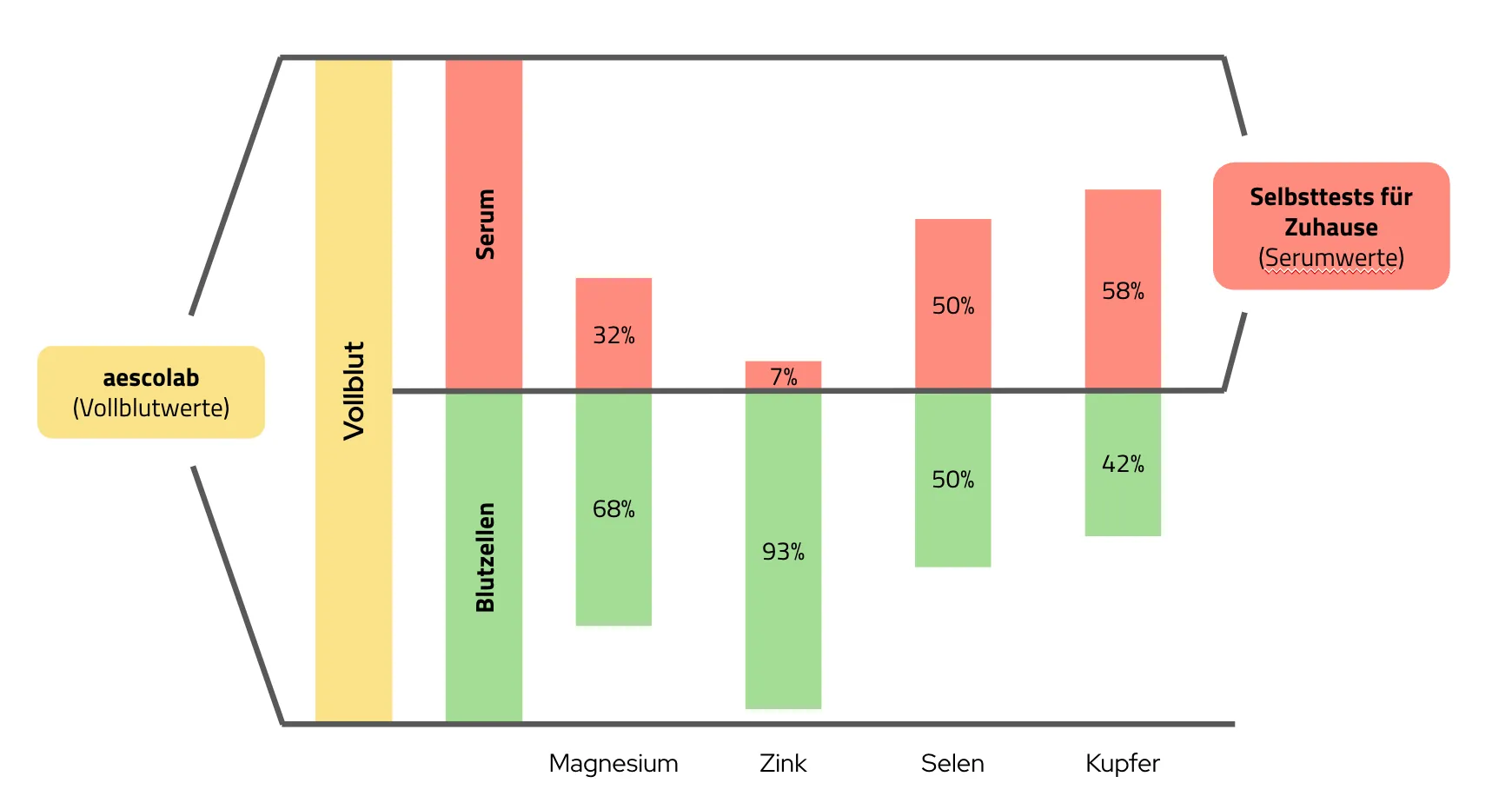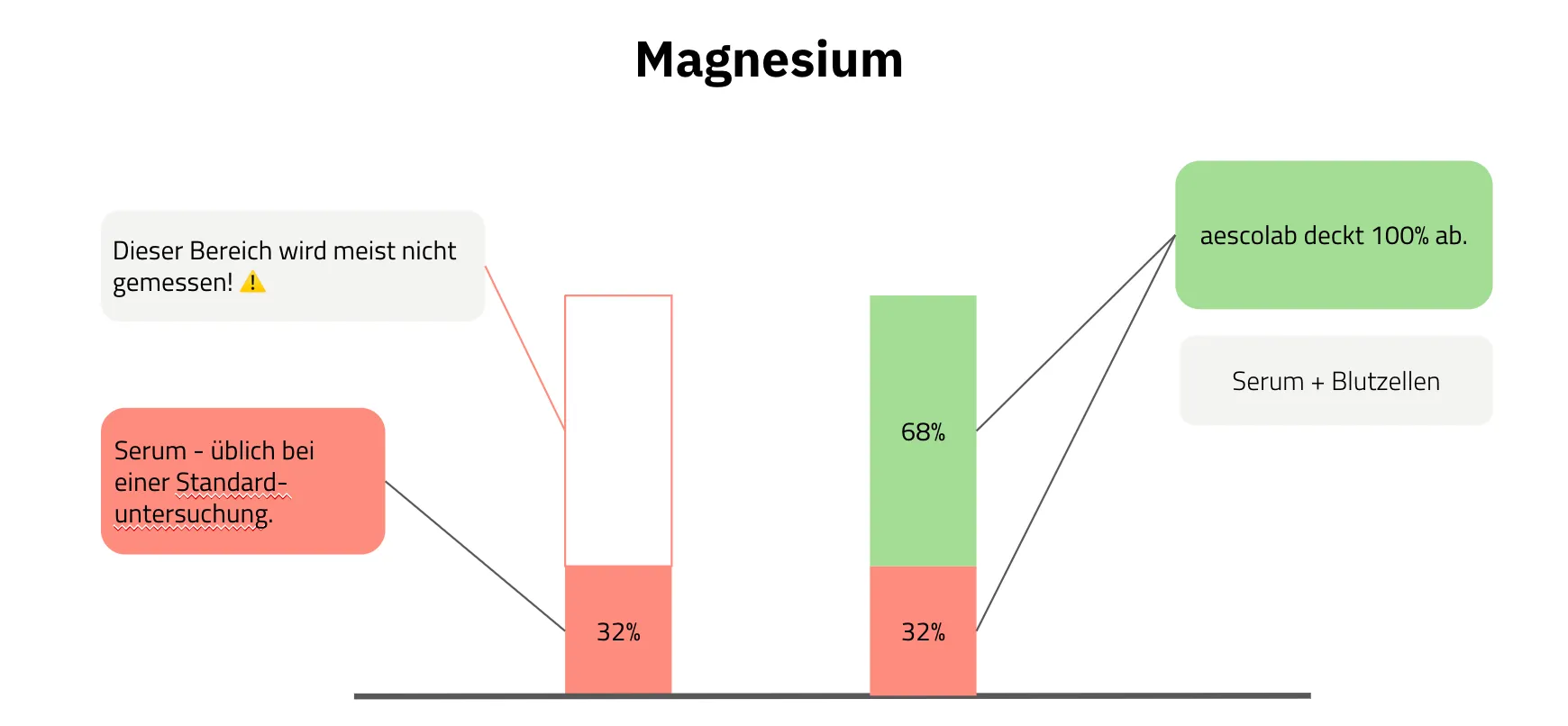Blood tests deciphered: Why not all analyses are the same
17.10.2025

Blood analyses are one of the most important ways to check nutritional status and overall health. But not all blood tests are the same — in particular, the choice between serum and whole blood analyses can have a decisive influence on the validity of the results. There are also alternative methods such as capillary blood or hair analyses, which are often advertised as practical home tests. But how reliable are they really? In this article, we show the differences and explain why choosing the right method is crucial for valid results.
Serum vs. whole blood levels
Whole blood is blood in its natural form that contains all components, while serum is blood plasma without coagulation factors and blood cells. Laboratory tests usually only use serum because it can be stored longer and is cheaper. Blood analyses by general practitioners are usually only serum values.
Whole blood analyses, on the other hand, examine both the liquid portion of blood with coagulation factors, the plasma, and the solid portion, the cells in the blood. Since many important minerals such as zinc, magnesium, selenium, potassium and copper are mainly stored in blood cells, a whole blood analysis records these proportions more precisely. In this way, potential deficiencies can be identified earlier, which is particularly beneficial for your energy and as part of preventive measures.
A serum value of zinc, for example, costs just 2€ for you as the end user, while zinc from whole blood costs around 24€. Serum levels are also justified, as they are cheap and available everywhere. They clearly indicate when there is an acute emergency in your body. However, we work preventively and need values that are highly meaningful, even if you still feel very fit and are not ill.
Why whole blood is recommended
Through whole blood levels, we can therefore measure the entire spectrum in order to obtain very meaningful results. Magnesium can be determined, for example, in serum, but also in whole blood, in blood cells. However, only approx. 32% of total magnesium can be measured in serum! We have deliberately opted for biomarkers from whole blood, even though laboratory costs are significantly higher here. For cost reasons, other online providers and analysis services often only use values from the serum, also as it is difficult for you as a customer to understand.
So keep paying attention to what type of biomarker is used for a blood analysis in the future — no matter where you have an analysis carried out.

Magnesium case study
Here you can see, using magnesium as an example, that the majority of your magnesium is usually not measured at all by a doctor. If the serum level is within the normal range, it usually just means that you are not seriously ill.
In normal measurements, you therefore have no correlation with the supply of the cells of your entire body. In order to keep the serum level (the 32%, which is measured normally) stable, the body even goes so far as to break down magnesium from the bones. Serum levels may therefore appear normal while there is already an undersupply of the cells. In order to monitor your long-term supply status, we therefore have no other option than to include “all” blood in the measurement. Magnesium is therefore also measured within red blood cells. This is only done with a whole blood analysis, which is more complex and therefore significantly more expensive. You don't need this to rule out acute symptoms, but you do need it to optimize your health and energy levels!
Many providers bring new home tests or hair analyses onto the market almost every day. Not a bad idea at first glance. Cheap and supposedly easy access.
However, these analyses must be viewed critically:
Capillary blood analyses (from the finger) are subject to major quality deficiencies; the measurements are not valid and cannot be compared with blood analysis from a vein.

Hair analyses and home tests?
That is one reason why the major renowned laboratories have not made these analyses their standard, even though taking blood from the vein requires so much more effort. After all, a home test would be much easier for everyone affected.
However, the significance is severely limited; values should not be taken at face value, but should be taken with caution. They can provide an indication, but these values should always be checked and checked using venous blood before taking wild amounts of vitamin D, for example. Simply to avoid incorrect dosing.
In hair analyses, external circumstances such as shampoo, environmental toxins, hair dyes, etc. have a significant influence on the values. These, too, should always be viewed with caution. You could also read the article by Stiftung Warentest about this.
Conclusion: Why choosing the right analysis method is so important
If you want valid results, you should consciously choose the right blood analysis. Serum levels are justified when it comes to acute deficiencies, but a whole blood analysis is usually the better choice for a preventive and comprehensive assessment. Especially for minerals such as magnesium, zinc or selenium, a serum analysis is not sufficient to represent the true supply status in the body.
Even though home tests and hair analyses may seem practical at first glance, they are only partially reliable. Anyone who wants to make well-founded decisions for their health should rely on venous blood collection as the gold standard.
That's why we joined Aescolab opted for venous whole blood analysis — because this is the only way we can ensure high quality and reliability of the results.
About the author

Editorial team
We are aescolab, a team of medical experts, coaches and entrepreneurs who share one goal: to help people and companies achieve more energy, health and performance.
More interesting articles

Vitamin D: Key to Bones, Immune System and Wellbeing
Vitamin D is much more than just a vitamin — it is a Essential prohormone, which controls numerous vital functions in the body. Not only does it affect bone health, but it also plays a crucial role in the immune system, muscle function, and even brain health. Optimal vitamin D levels are associated with a lower risk of cardiovascular disease, autoimmune diseases, and certain types of cancer.
The problem: In our latitudes, sufficient vitamin D production through sunlight is often not guaranteed — especially during the winter months. Many people therefore unconsciously suffer from a deficiency, which can be associated with fatigue, vulnerability to infections, muscle pain or even depression.
This article shows you why vitamin D is essential for your health, how to identify a deficiency and what you can do to get your levels up to optimal levels.

Omega-3: Why your body can't do without






